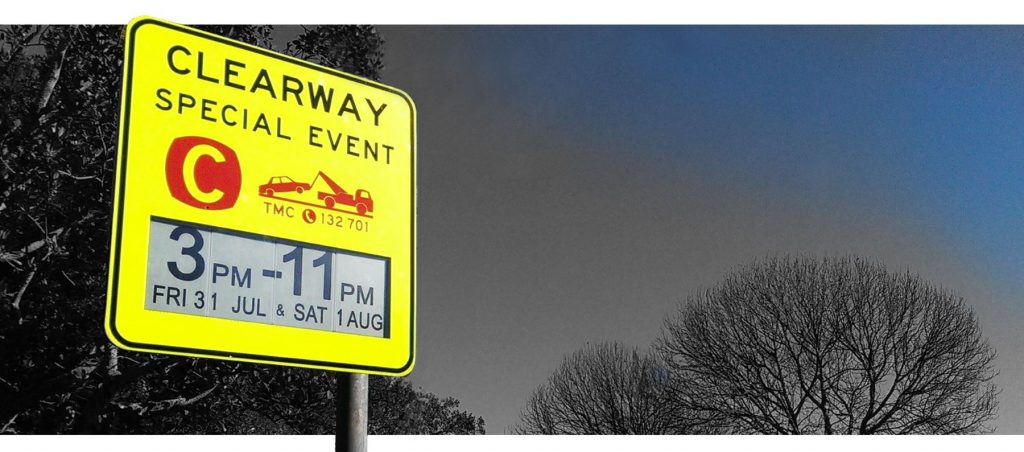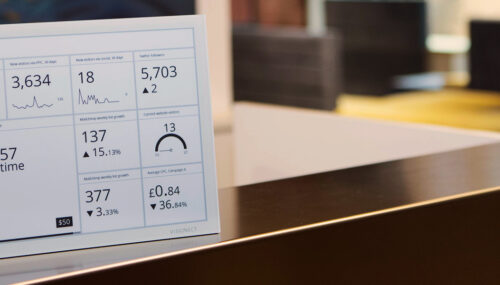

Visionect-powered electronic paper reports zero failures
Visionect, 3 May 2017
Sydney’s solar-powered e-paper traffic signs are improving daily transit and simplifying road sign deployment in Australia. Developed by Mercury Innovation and running on Visionect technology, the hardware reports an impressive zero failure rate since first installed in 2013.
To see road traffic information on the go, drivers in Sydney have been relying on unique electronic paper signs optimized for road traffic.
The e-paper traffic signs are the result of a close collaboration between Visionect and Mercury Innovation and represent a fusion of experience in deploying low power digital signage and expertise in traffic related products. Powered by Visionect and developed by Mercury, the traffic signs are especially designed to support the many challenges of outdoor deployment. Since first installed in 2013, the technology has had zero failures, proving that Sydney’s Intelligent Transportation System is both rugged and durable.
Visionect is known for working on numerous electronic paper development projects for many different industries. Equipped with the experience and know-how from past electronic paper development projects, Visionect has developed other similar quality products that are powered by the company’s state-of- the-art technology for rapid electronic paper development. Joining the Sydney traffic signs are, among other, e-paper museum labels, truckside displays, and the company’s flagship product Joan, a digital door label and meeting room scheduling solution with impeccable energy efficiency.

To improve daily transit and simplify road sign deployment, the Australian Road and Maritime Services had installed e-paper traffic signs on Sydney roads, representing the first time that electronic ink, a technology best known from e-book readers and smart watches, had been used in traffic signage. A unique Internet of Things ecosystem of digital displays was designed to overcome the usual visibility, powering and connectivity issues of traffic signalization.
“The road signs in Sydney are based on years of experience developing rugged but reliable products”, said Matej Zalar, CEO of Visionect. “The signs build on Visionect’s years of electronic paper signage expertise, and can, thanks to Mercury Innovation, withstand heat, humidity and direct sunlight and wind. We are proud of our zero failure rate.”
To reliably display road information, wireless signs had been built that communicate over the cellular network and don’t malfunction in the sun’s heat or during a power outage.
In addition to saving energy, the fully customizable e-traffic signs (which integrate displays from E Ink®) help cities save on temporary road sign placement as well. To further optimize and protect the electronic traffic signs, detection of location coordinates and tamper attempts has been developed, enabling road services to react quickly should any of the signs be damaged for whatever reason. For better nighttime visibility, the signs’ front panel light is triggered when it gets too dark for drivers to be able to read the signs.
“We wanted to create a product that was lightweight, but thin and solar powered. This means that no holes were dug to incorporate cables for power or data,” said Enrique Esquivel, the Co-founder of Mercury Innovation Traffic Solutions.
New South Wales Roads Minister Duncan Gay added that “to be able to bring a simplicity, to bring a clear message on that night or that day through this new technology is just terrific.”
“In providing drivers and passengers with customizable real time information in traffic or public transport, smart road signs create user-triggered content on the road signs, more than exceeding the goal of building a comprehensive road signalization system. We are very proud of our partnership with Mercury Innovation, E Ink and the local authorities, which resulted in a successful project,” said Zalar.
Tags

